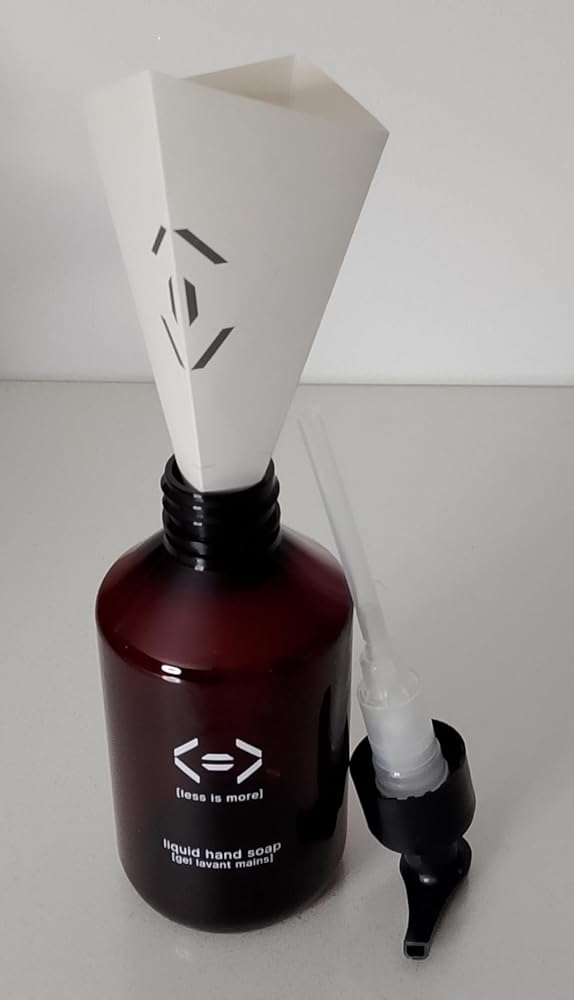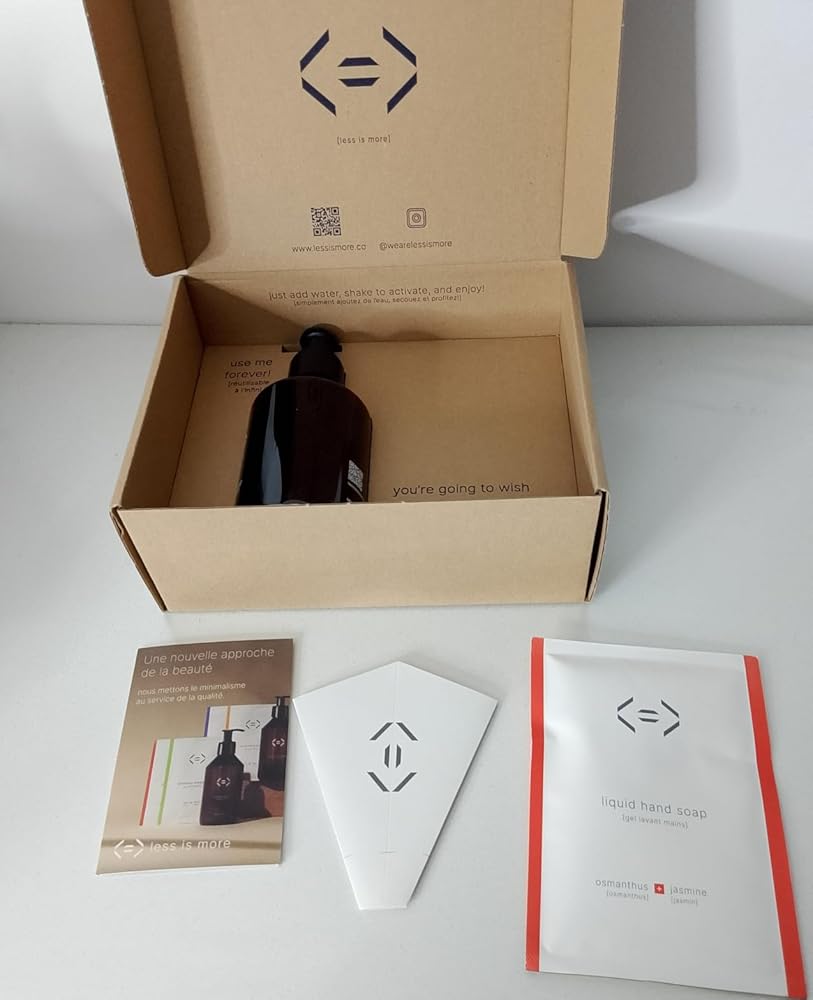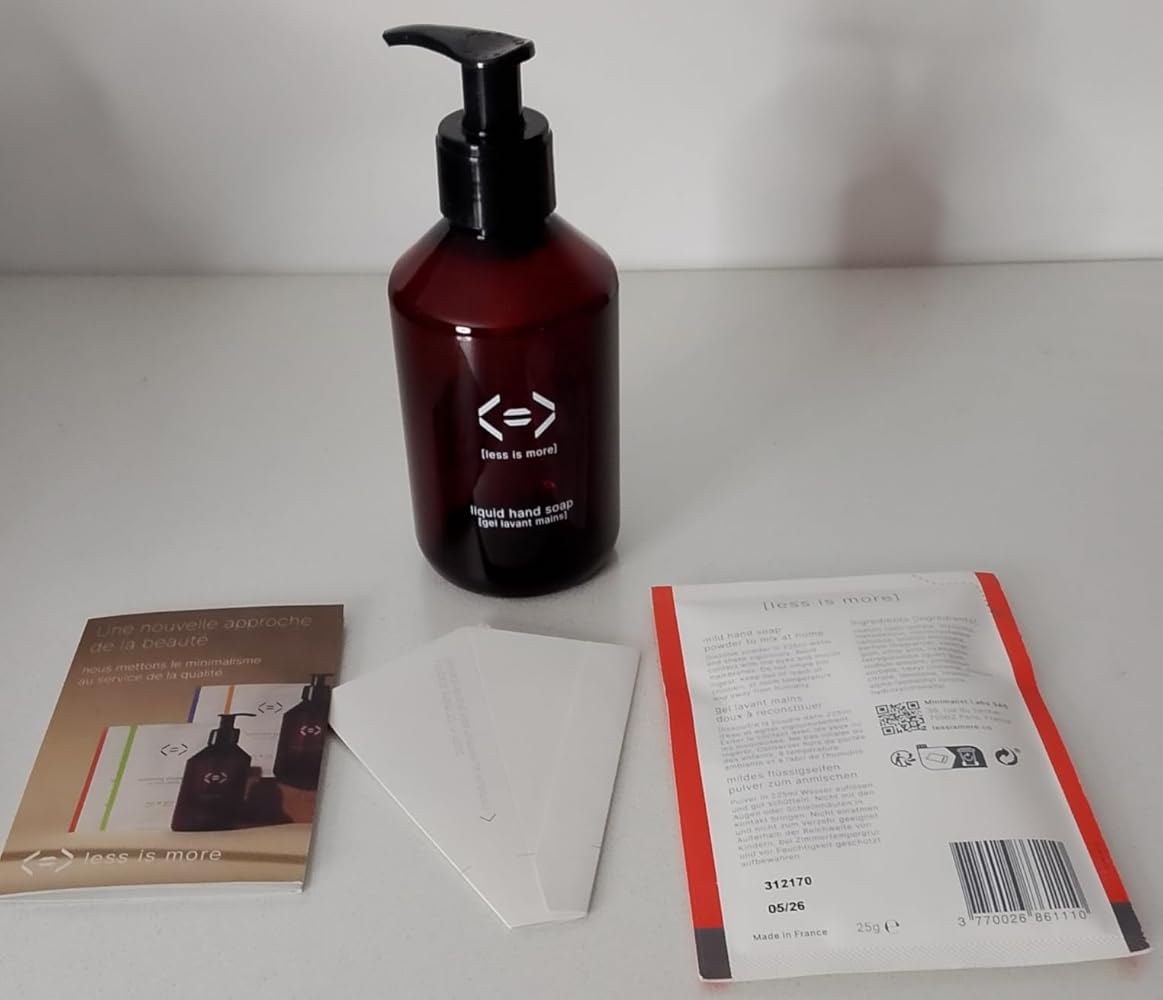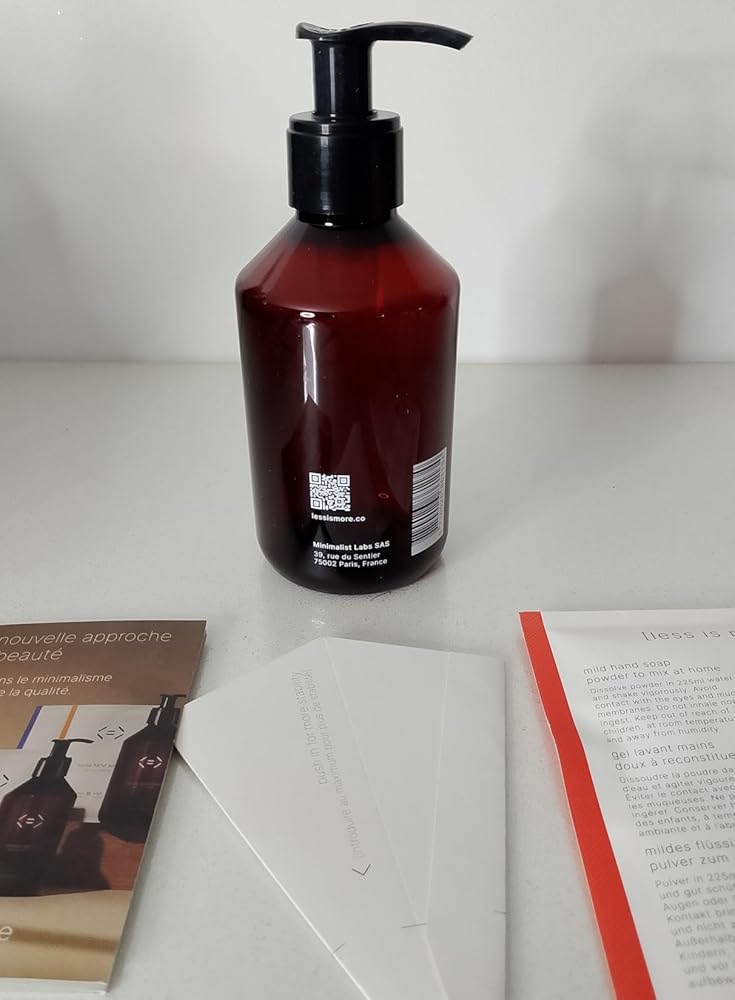![soothing shower gel [mimosa + almond]](http://lessismore.co/cdn/shop/files/LESSISMORE_PACKSHOT_PARFUMS_SG_MA_png.png?v=1758277399&width=1080)
![soothing shower gel [mimosa + almond]](http://lessismore.co/cdn/shop/files/3_e0159f1c-5228-436f-8c8d-cec89b87cf28.jpg?v=1766429253&width=1080)
![soothing shower gel [mimosa + almond]](http://lessismore.co/cdn/shop/files/5_2eb7ef27-4172-4553-96fb-0b9683b20706.jpg?v=1766429253&width=1080)
![soothing shower gel [mimosa + almond]](http://lessismore.co/cdn/shop/files/2_edced778-96c6-48ad-bb9a-08768113ba71.jpg?v=1766429253&width=1080)
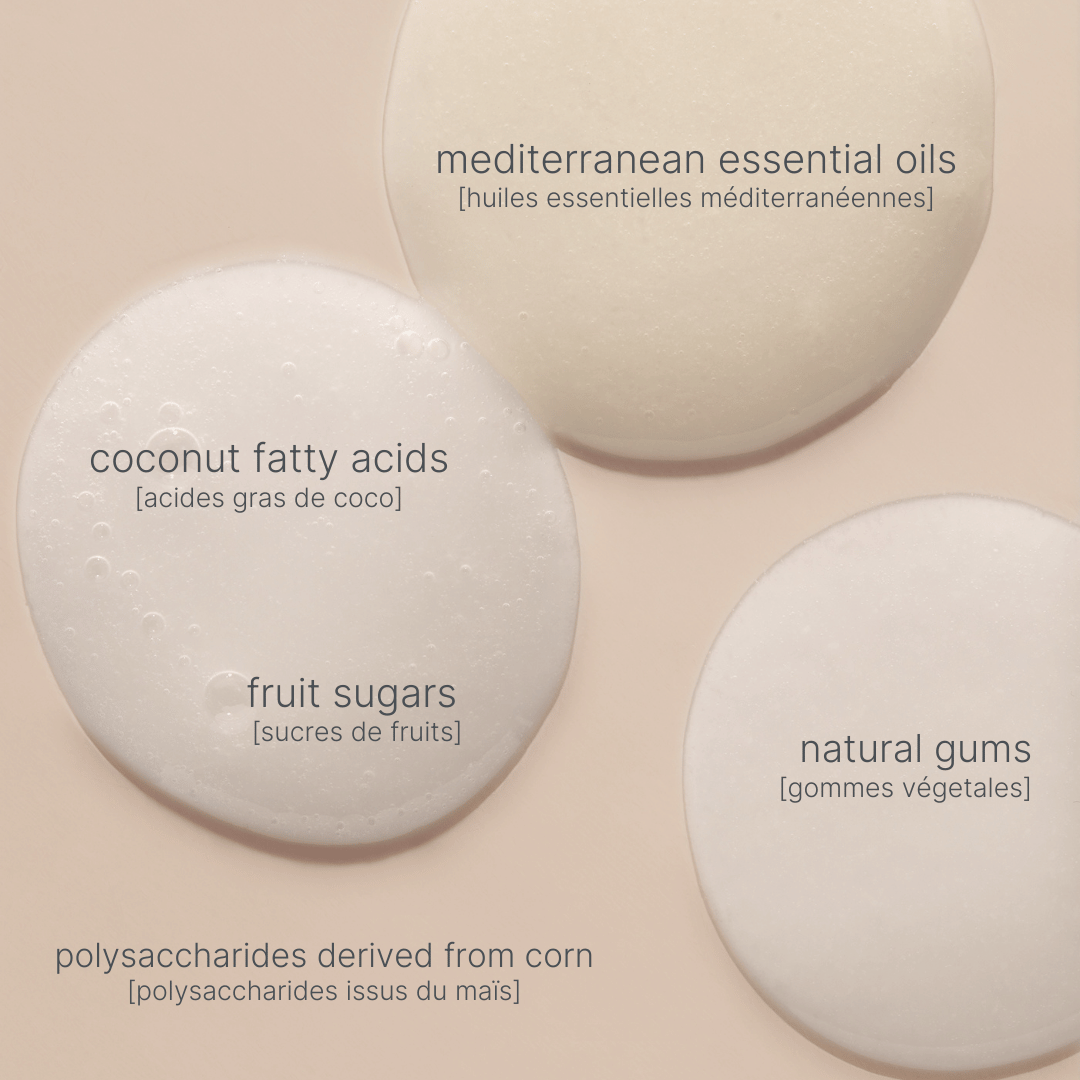
![soothing shower gel [mimosa + almond]](http://lessismore.co/cdn/shop/files/1_2effd25f-6b29-413d-ac21-d067b67b5f14.jpg?v=1758533823&width=1080)
![soothing shower gel [mimosa + almond]](http://lessismore.co/cdn/shop/files/SG_mimosa_almond_d44d2cdf-7da7-46a3-b529-6dba16757b3b.jpg?v=1758277399&width=1038)
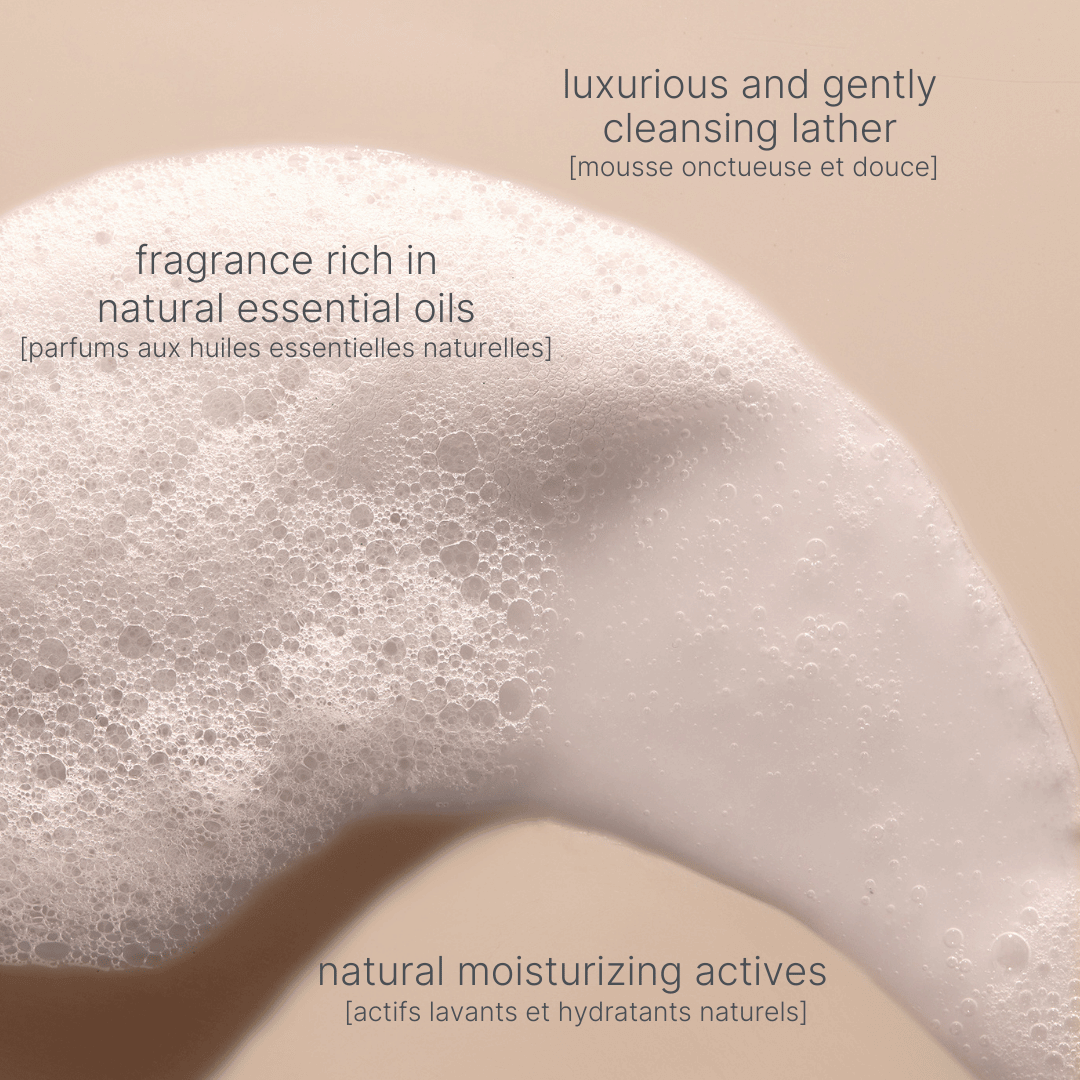
![soothing shower gel [mimosa + almond]](http://lessismore.co/cdn/shop/files/7_40fca456-41f3-4f56-a15a-0366530c78d9.jpg?v=1766429253&width=1080)
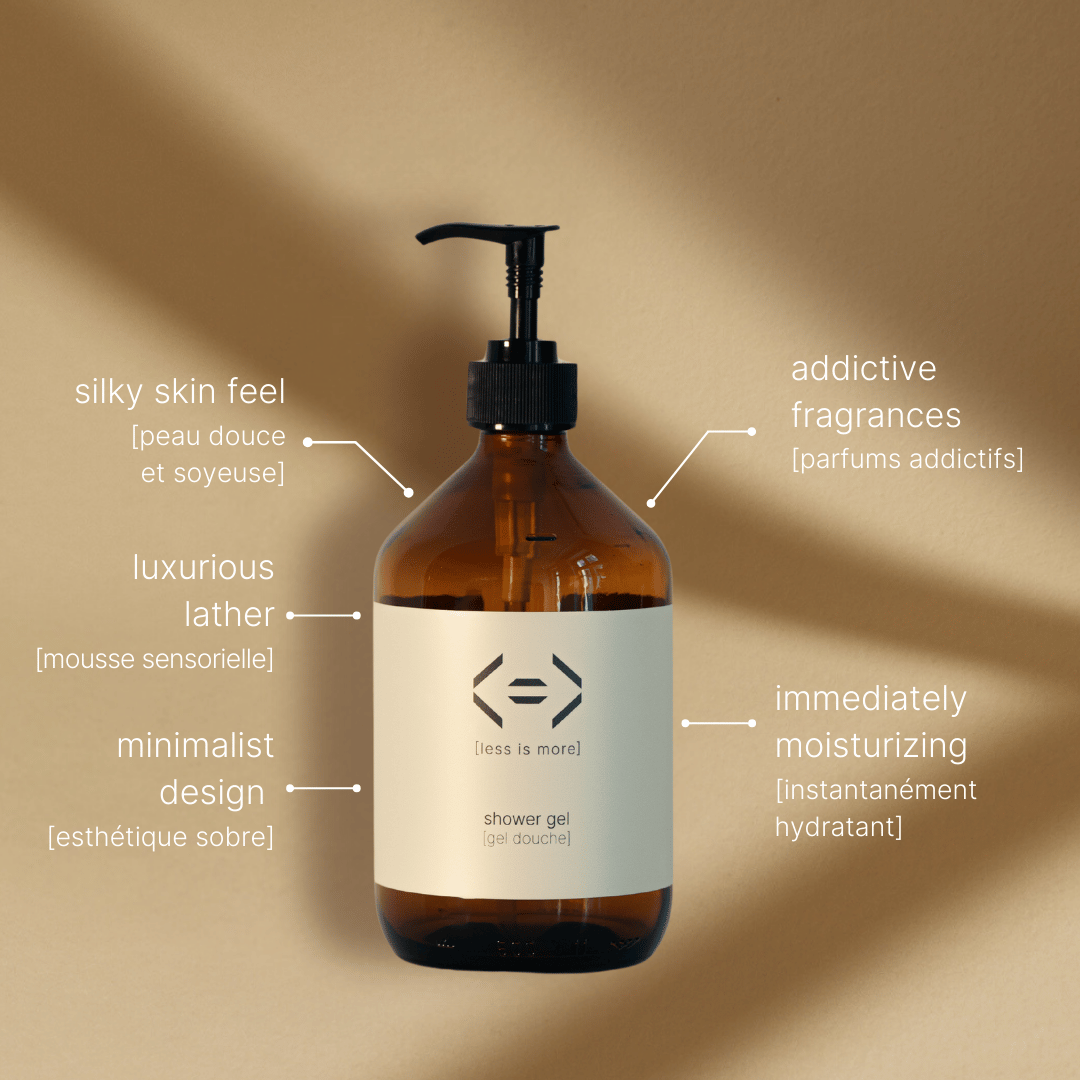
![soothing shower gel [mimosa + almond]](http://lessismore.co/cdn/shop/files/4_e7c413e2-0e57-4585-99bb-dce7637c3659.jpg?v=1766429253&width=1080)
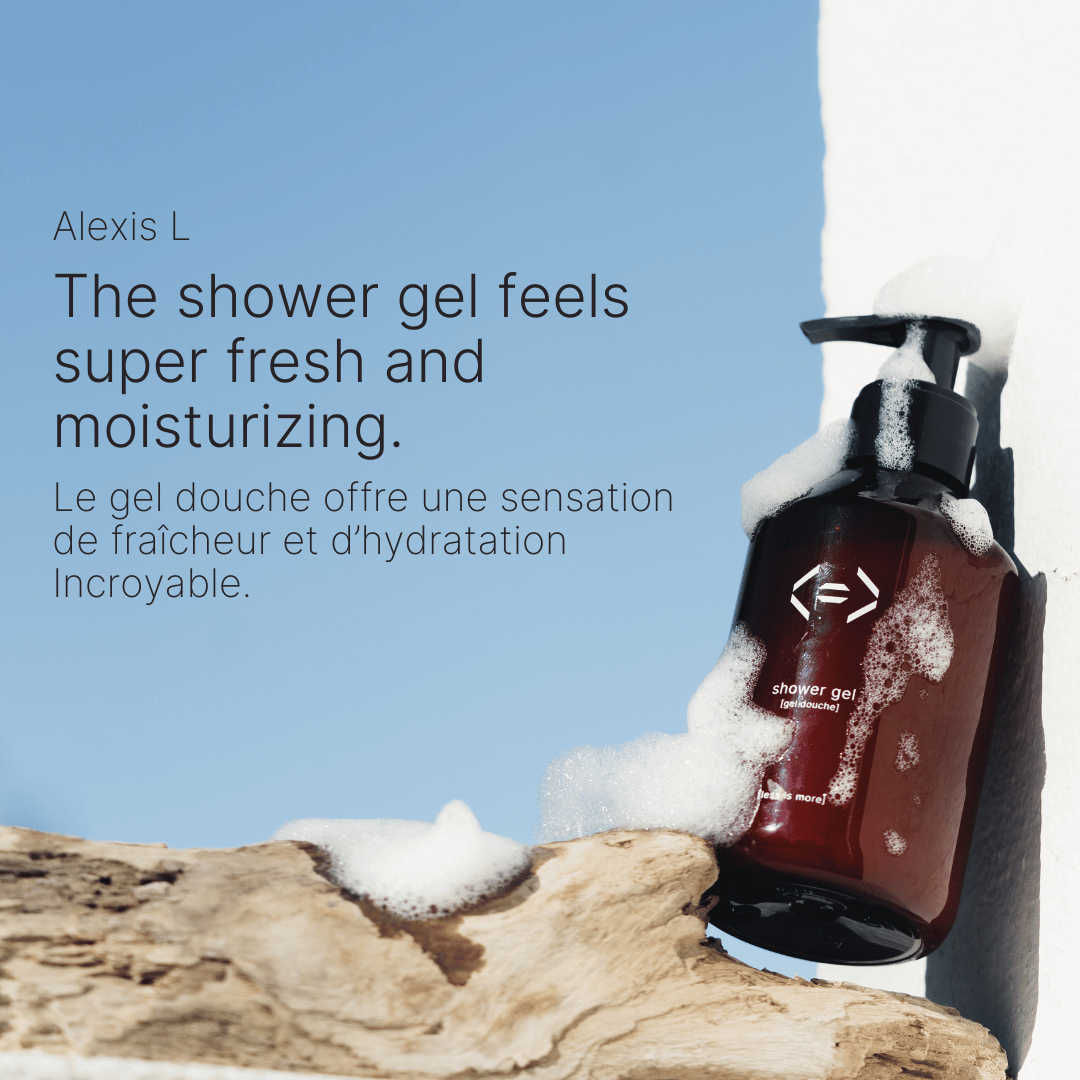
![soothing shower gel [mimosa + almond]](http://lessismore.co/cdn/shop/files/SG_MA.png?v=1758277385&width=1080)
soothing shower gel [mimosa + almond]
A shower experience that is reminiscent of the hopefulness of sunny spring days. Its unique gel texture melts on your skin to develop a rich lather that is easy to spread over your body, and rinses off to leave you feeling clean, softly moisturized and delicately fragranced with caring almond and floral mimosa.

Secure Payments
![soothing shower gel [mimosa + almond]](http://lessismore.co/cdn/shop/files/LESSISMORE_PACKSHOT_PARFUMS_SG_MA_png.png?v=1758277399&width=1080)
Caring with full awareness
A pure formula for you, a reduced impact on the planet. Every detail is designed to balance efficacy, safety, and environmental respect.
Our shower gel is formulated without SLS, parabens, artificial colorants, micro-plastics, or animal-derived ingredients. Unlike conventional shower gels, it cleanses your skin gently, without drying it out or disrupting its natural balance.
We replaced irritating agents with natural, biodegradable ingredients, carefully selected to respect your skin and the planet.
Our packaging is designed to combine functionality, durability, and respect for the environment.
Eco-responsible refills:
- Made with paper from sustainably managed forests.
- Fully recyclable, reducing plastic waste.
- Designed for easy postal delivery—they fit all mailboxes.
Reusable bottles:
- 250 ml: Made of 100% recycled PET plastic to limit new plastic production.
- 500 ml: An elegant, sturdy and durable glass bottle.
By pairing our refills with these bottles, you actively help reduce waste while opting for a timeless, functional design.
With just 25 g of powder, you get 250 ml of shower gel, for about 50 refreshing showers. Less packaging, more care—for clean, hydrated skin day after day.
We believe in the quality of our products and in our customers’ satisfaction. If for any reason you’re not completely satisfied, you have 30 days to return your product, hassle-free. We’re committed to providing a risk-free shopping experience, with a quick and simple return process.
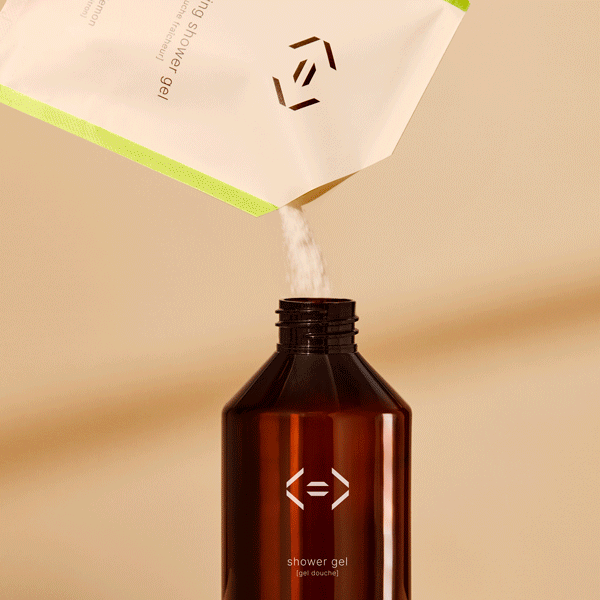
A revolution: powder-based care, activated at home
Forget conventional shower gels made of 80% water and superfluous ingredients. Our concentrated powder formulas include only what’s essential to cleanse and care for your skin. Add water, shake, and enjoy. A simple gesture, a reduced impact.

Natural ingredients, care that respects you
Say goodbye to single-use plastic bottles and hello to a smart, sustainable solution. Thanks to our eco-friendly, reusable packaging, you reduce your environmental impact while enjoying a premium experience. It’s good for you and better for the planet.
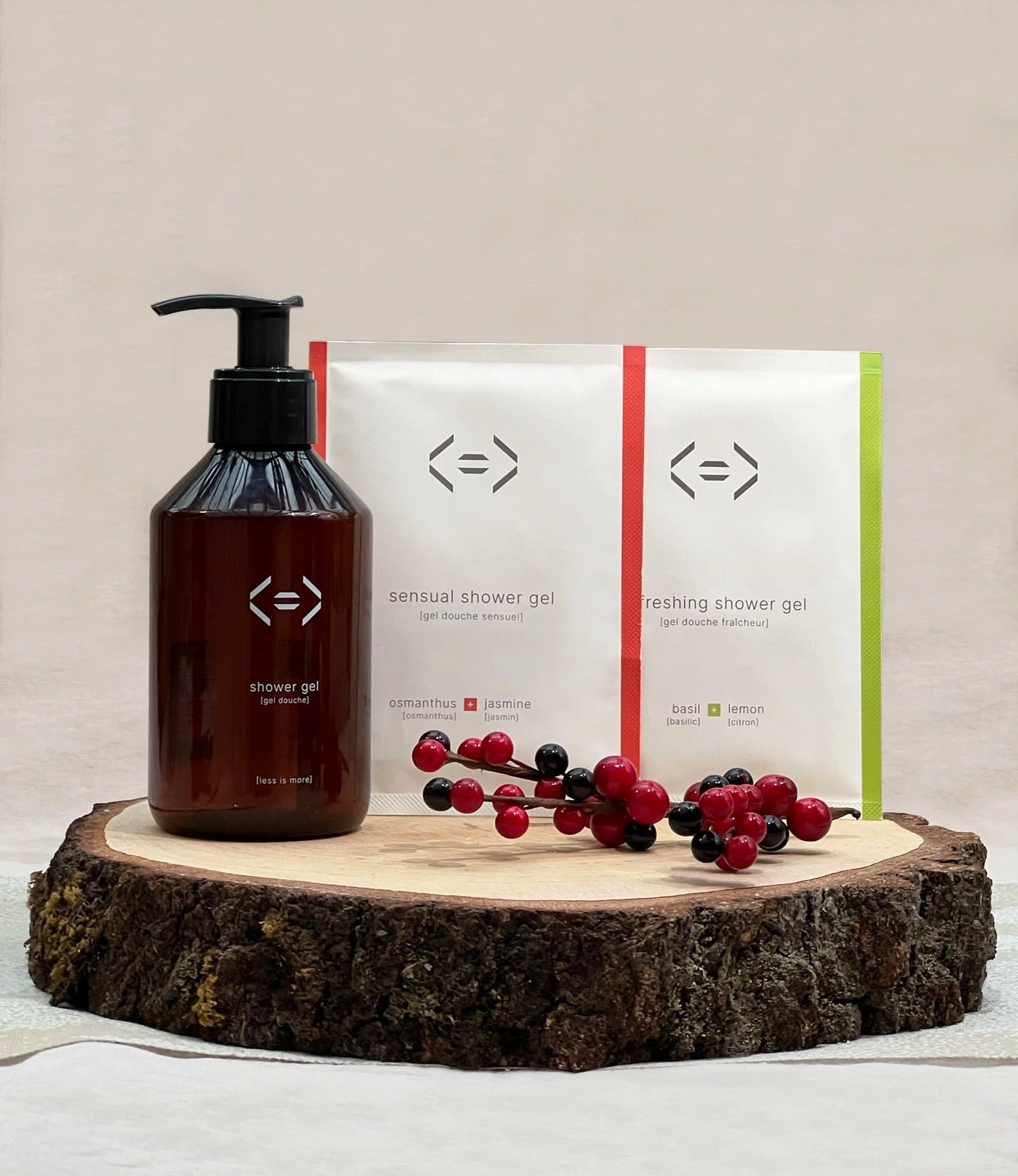
Care that lasts as long as your commitment
Imagine a shower gel that combines sensory appeal, efficacy, and ecological commitment. Every detail, from formulation to packaging, was designed to reduce our environmental impact while caring for your skin. A daily gesture, a positive impact.
Recognized and approved
Let customers speak for us
They talk about us

"Reducing the active ingredients into powder - bravo for this French innovation."

"This shampoo changes our life!"

"A virtuous idea ! As sustainable as solids, as practical as liquids."

"Stylish, yet sustainable."
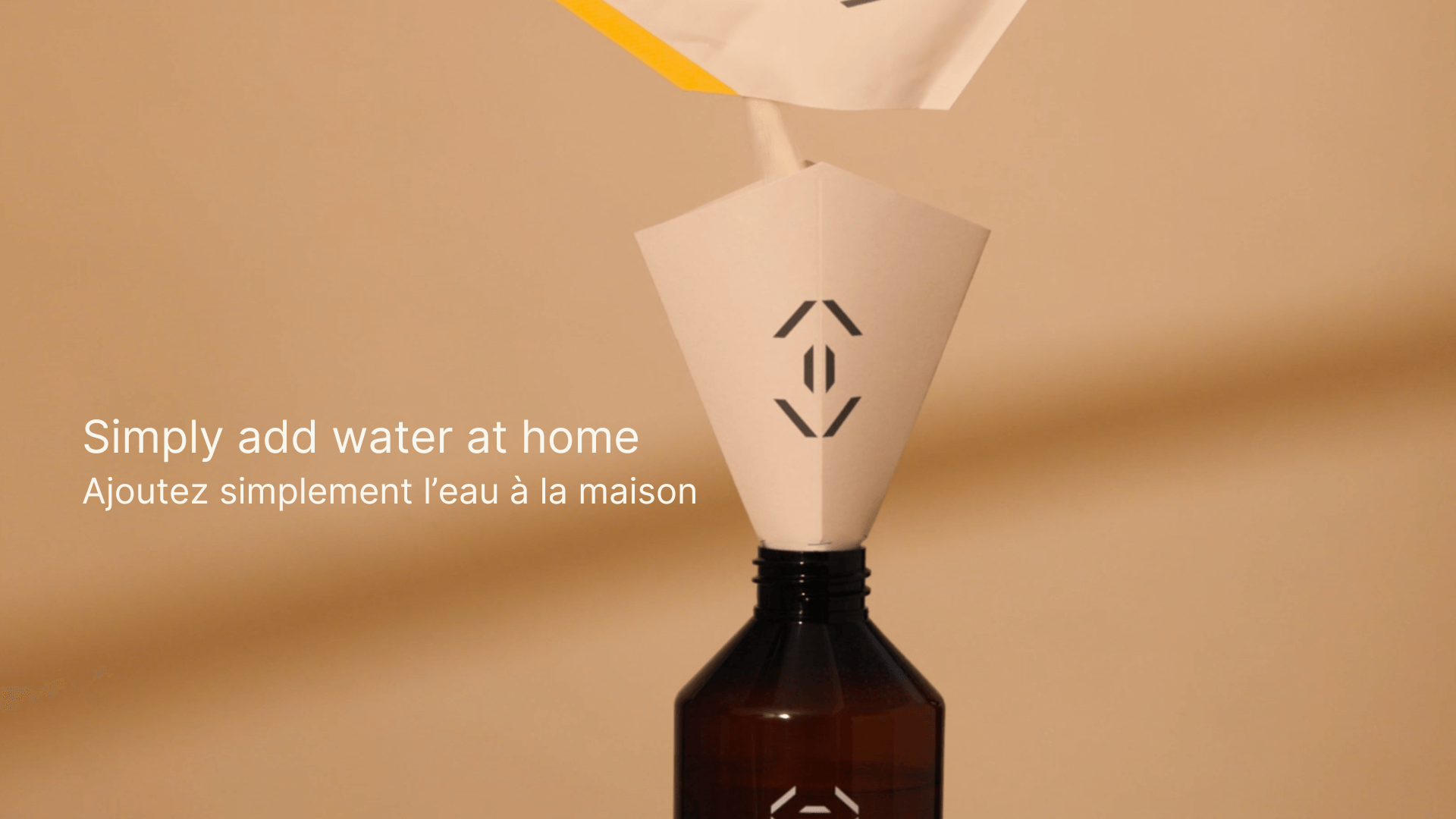
How does it work?
Less is More Shower Gel vs. Traditional Shower Gel
+99% natural origin, free from SLS, colorants, silicones and parabens
May contain questionnable substances like SLS, parabens, and silicones
Concentrated powder formula, activated with water at home
Mainly water and often unnecessary additives
Reduces carbon footprint by 90%
Unnecessary transport of water and single-use plastic packaging
Recyclable paper refill sachet
Non-recyclable plastic bottles, often single-use
Glass or recycled PET bottles, designed for reusability
Disposable bottles ending up as plastic waste
25 g of powder = 250 ml of shower gel (about 50 uses)
250 ml of shampoo ( about 50 uses )
Not tested on animals and no animal-derived ingredients
May contain animal derived ingredients
Gentle, non-irritating formulation, scalp-friendly
Can cause irritation due to harsh chemicals
Your questions, our answers
Can I return a product if I'm not satisfied?
Yes, we have a money back guarantee and accept returns within 30 days of purchase. Find out more here
How do I mix the shower gel?
- Add water: Fill about one-third of the bottle with drinking water*.
- Add the powder: Pour 25 g of shower gel powder into the bottle.
- Top up with water: Add water until you reach the shoulder of the bottle (about 225 ml for a total of 250 ml).
- Close and shake: Close the bottle and shake vigorously 10 times until you get a smooth mixture.
- Let it rest: Let the mixture rest for 20 minutes* so the powder fully dissolves.
- Shake again: Shake the bottle 5 more times to ensure everything is well mixed.
- Enjoy your experience: Your shower gel is ready to use!
*Room temperature water is sufficient, but filtered water is even better for an optimal experience.
**After 20 minutes, the shower gel will be ready to use, but the final texture will fully develop after 24 hours.
How long does one shower gel refill last?
A 25 g shower gel refill makes 250 ml of product, about 50 uses. This concentrated, effective formula provides a pleasant experience while minimizing waste and environmental impact.
Is it suitable for sensitive skin?
Our shower gel is formulated without harsh ingredients such as SLS, colorants silicones, or other potentially irritating agents, making it suitable for sensitive skin. Its gentle, minimalist composition respects your skin’s natural balance, leaving you feeling fresh and comfortable after every use.
Is it suitable for the whole family?
Our mild shower gel is suitable for all skin types, from the age of 3. Its minimalist formula, enriched with natural, soothing ingredients, respects the skin’s balance for safe daily use.
Do you have more questions?
Take a moment to consult our FAQ and our values to see if you can find an answer there.
If you’d like to contact us, you can do so via our contact page.
![juicy liquid hand soap [mandarin + sage]](https://cdn.shopify.com/s/files/1/0753/2992/9560/files/0003_LESS_IS_MORE_PARFUMS_MANDARINE_SAUGE_70x70.jpg?v=1764664511)
![sensual liquid hand soap [osmanthus + jasmine]](https://cdn.shopify.com/s/files/1/0753/2992/9560/files/0001_LESS_IS_MORE_PARFUMS_OSMANTHUS_JASMIN_MAIN_70x70.jpg?v=1764664677)
![Christmas Set [hands, body and hair]](https://cdn.shopify.com/s/files/1/0753/2992/9560/files/Square_visals_for_website_2_6f7cce6f-bb24-4ed5-931c-be86918ef744_70x70.jpg?v=1764613411)
![softening shampoo [argan + oat]](https://cdn.shopify.com/s/files/1/0753/2992/9560/files/0011_LESS_IS_MORE_PARFUMS_ARGAN_AVOINE_bbd23dfd-c321-4a5f-8e51-535a4bc2f2cc_70x70.jpg?v=1764664331)
![Christmas Set [hands, body and hair]](https://m.media-amazon.com/images/I/61YaU+7-CVL._SY1000.jpg)
![refreshing shower gel [basil + lemon]](https://m.media-amazon.com/images/I/71FnI-5zeHL._SY1000.jpg)
![sensual shower gel [osmanthus + jasmine]](https://cdn.shopify.com/s/files/1/0753/2992/9560/files/LESSISMORE_PACKSHOT_PARFUMS_SG_OJ_png_70x70.png?v=1758277837)
![energizing shower gel [mandarin + sage]](https://cdn.shopify.com/s/files/1/0753/2992/9560/files/0004_LESS_IS_MORE_PARFUMS_MANDARINE_SAUGE_GEL_DOUCHE_70x70.jpg?v=1764664593)
![juicy liquid hand soap [mandarin + sage]](https://m.media-amazon.com/images/I/71E+zBrgAWL._SY1000.jpg)
![Christmas Set [hands, body and hair]](https://m.media-amazon.com/images/I/61hGqmHyDeL._SY1000.jpg)
![travel kit [shower gel + shampoo]](https://cdn.shopify.com/s/files/1/0753/2992/9560/files/ImagesGillescarre_2_6e4e85fd-cfec-447f-99cc-703ba0875ad6_70x70.jpg?v=1764660698)
